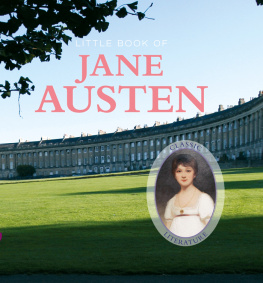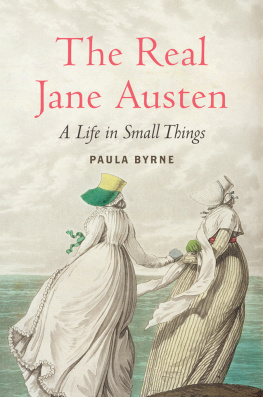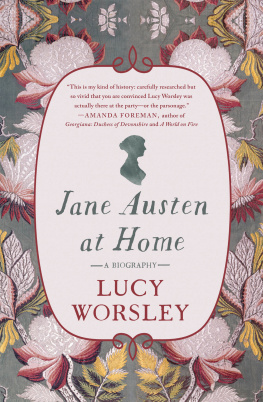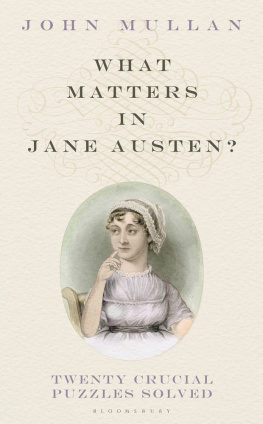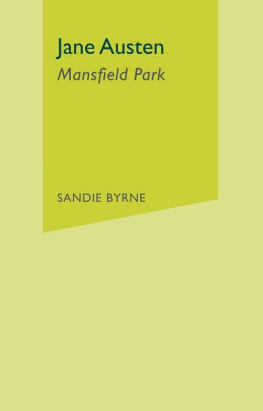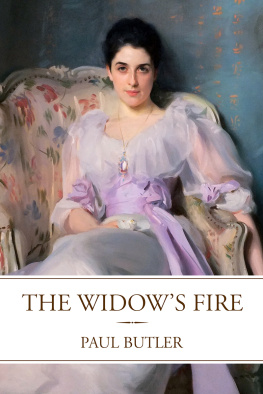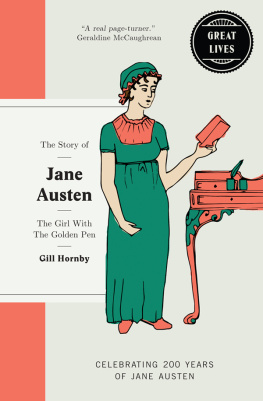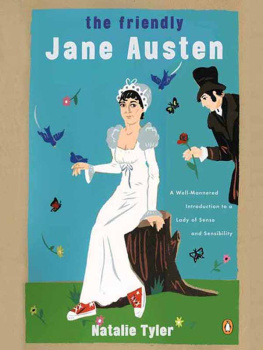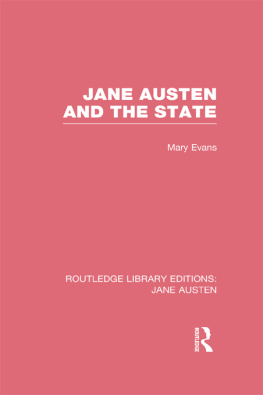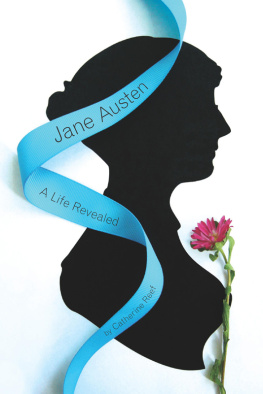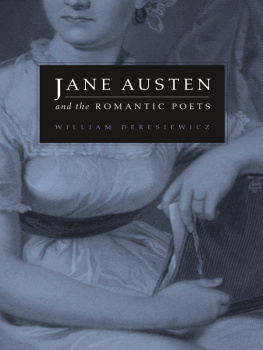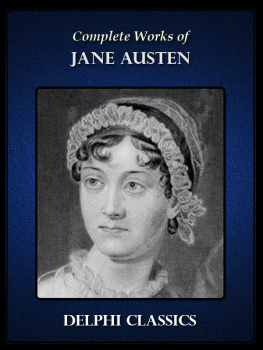LITTLE BOOK OF
JANE
AUSTEN
First published in the UK in 2006
G2 Rights 2014
www.g2ent.co.uk
All rights reserved. No part of this work may be reproduced or utilised in any form or by any means, electronic or mechanical, including photocopying, recording or by any information storage and retrieval system, without prior written permission of the publisher.
ISBN 978-1-909040-04-5
eISBN 978-1-782819-76-9
The views in this book are those of the author but they are general views only and readers are urged to consult the relevant and qualified specialist for individual advice in particular situations. G2 Rights hereby exclude all liability to the extent permitted by law of any errors or omissions in this book and for any loss, damage or expense (whether direct or indirect) suffered by a third party relying on any information contained in this book.
All our best endeavours have been made to secure copyright clearance for every photograph used but in the event of any copyright owner being overlooked please address correspondence to G2 Rights, Unit 7-8, Whiffens Farm, Clement Street, Hextable, Kent BR8 7PQ
C ontents
I ntroduction
O ften revered as the first writer to give the novel its modern-day character, Jane Austen was widely read during her own lifetime, even though her books were published anonymously. With just six major titles Sense And Sensibility, Pride And Prejudice, Mansfield Park, Emma, Persuasion and Northanger Abbey Austen, who began her writing career in order to entertain her family, became one of the greatest classical authors in the English language.
Janes father, the Reverend George Austen, was born in 1731. His mother died in childbirth and, when his father died a year after marrying for the second time, George was sent to live with his aunt in Tonbridge, Kent; his stepmother did not want the responsibility of her husbands offspring. The handsome young George Austen earned a fellowship to study at St Johns College, Oxford, where he also worked as assistant chaplain and dean of arts. His time at the university saw him awarded Bachelor of Arts, Master of Arts and Bachelor of Divinity degrees, while he also worked as a lecturer in Greek.
The quiet, scholarly Austen met Cassandra Leigh, who was born in 1739, when she visited her uncle in Oxford. Documents written at the time confirm the Reverend Austen was devotedly in love with his witty and lively wife, who ran an economical yet comfortable household. The couple went on to have eight children (six sons and two daughters) who, unusually for the time, all survived into adulthood. It is known from Janes letters to her family that she enjoyed a happy childhood during which she was cared for lovingly.

An original family portrait of English novelist Jane Austen

Steventon, the birthplace of Jane Austen
Jane was the Austens second daughter and the seventh of the eight children. James (1765-1819) was the oldest of the Austen siblings and, like his father, a scholarly type. He left for Oxford University at the age of 14 in 1779 and was ordained as a clergyman in 1787. George Austen (1766-1838), named after his father, suffered developmental disabilities and was possibly profoundly deaf. He was forced to live in care for his entire life.
Edward (1767-1852), who had a head for business, was adopted by Thomas and Catherine Knight, extremely rich cousins of the Austen family, in the early 1780s. He experienced the Grand Tour a custom of the time in which wealthy young men travelled around Europe before inheriting his adoptive familys estate and taking on their family name. Henry Austen was born in 1771 and, like his mother, was witty and charismatic. Having become Janes favourite brother despite his failed ventures (he was declared bankrupt in 1815), he died some 33 years after his famous younger sister.
The next child born to George and Cassandra was their first daughter, Cassandra Elizabeth (1773-1845), who was Janes most constant companion and true confidante, a fact that is evident from the 100 or so surviving letters Jane wrote to her sister. Cassandra, however, destroyed many of the letters in the years following the young authors death.
Both Frank (1774-1865) and Charles (1779-1852) joined the Royal Navy when they reached the age of 12. Both were based in Portsmouth and went on to become admirals after fighting in the Napoleonic wars.
Born in Steventon, near Basingstoke, on 16 December 1775, Jane Austen spent the first 25 years of her life in Hampshire, mainly being tutored at home. She did, however, attend school occasionally and was fortunate to receive an education that was much broader than that of many of her peers.
Janes aptitude for writing led to her entertaining her family with her musings and literature both her parents were avid readers despite the fact that reading novels was considered a questionable activity at the time. Janes earliest writings date from about 1787, when she was around 12 years old, but she was renowned for being reticent about revealing her work to the wider world. She wrote on small pieces of paper that she would hide quickly should visitors come to the rectory. Later in life, she let a creaking door remain unfixed so she could hear visitors approaching and have just enough time to hide her work.
Her early writings were observant and chatty and she was supported wholeheartedly by her parents, who encouraged their young daughters aspirations. They bought Jane paper and a writing desk and even tried to help get her work published; First Impressions (later titled Pride And Prejudice) would be the first novel offered for publication.
As Jane grew and matured into a young woman she socialised with the upper middle classes and rich landed gentry, whom she went on to satirise in her novels. Her outlook was further broadened by the numerous relatives and friends with whom she spent her time. It became commonplace for the Austen family to put on amateur theatricals: between 1782 and 1784 the family put on plays at the Steventon rectory and three years later had advanced to more elaborate productions, mainly staged in a barn beside the family home.
Jane continued to read extensively and critically, and this led to her first juvenilia, which included comic and amusing pieces: parodies and variations of 18th century literature in both novel and serious history formats. By the age of 23 she had written three novels: Elinor And Marianne, an early version of Sense And Sensibility (1811); First Impressions, which was to see the light of day later as Pride And Prejudice (1813); and Susan, an early version of Northanger Abbey (1818). George Austen offered First Impressions to a publisher but the firm declined even to look at the manuscript.
With a fairly good income of around 600 a year, Rev Austen was nevertheless by no means rich (he had eight children to support, after all), but his wife and children lived a comfortable existence. Their means were supplemented by the tutoring of pupils who came to live with the family while they were studying. In 1783, Cassandra and Jane were sent to Mrs Cawley in Oxford and later Southampton to further their education. An infectious disease at the school saw both girls brought home, and they then attended the Abbey boarding school in Reading. Back at home where most of their tutoring took place the two sisters were taught piano and drawing, but Rev Austens extensive library of 500 books gave Jane the foundation she desired and satisfied her thirst for knowledge.
Next page
